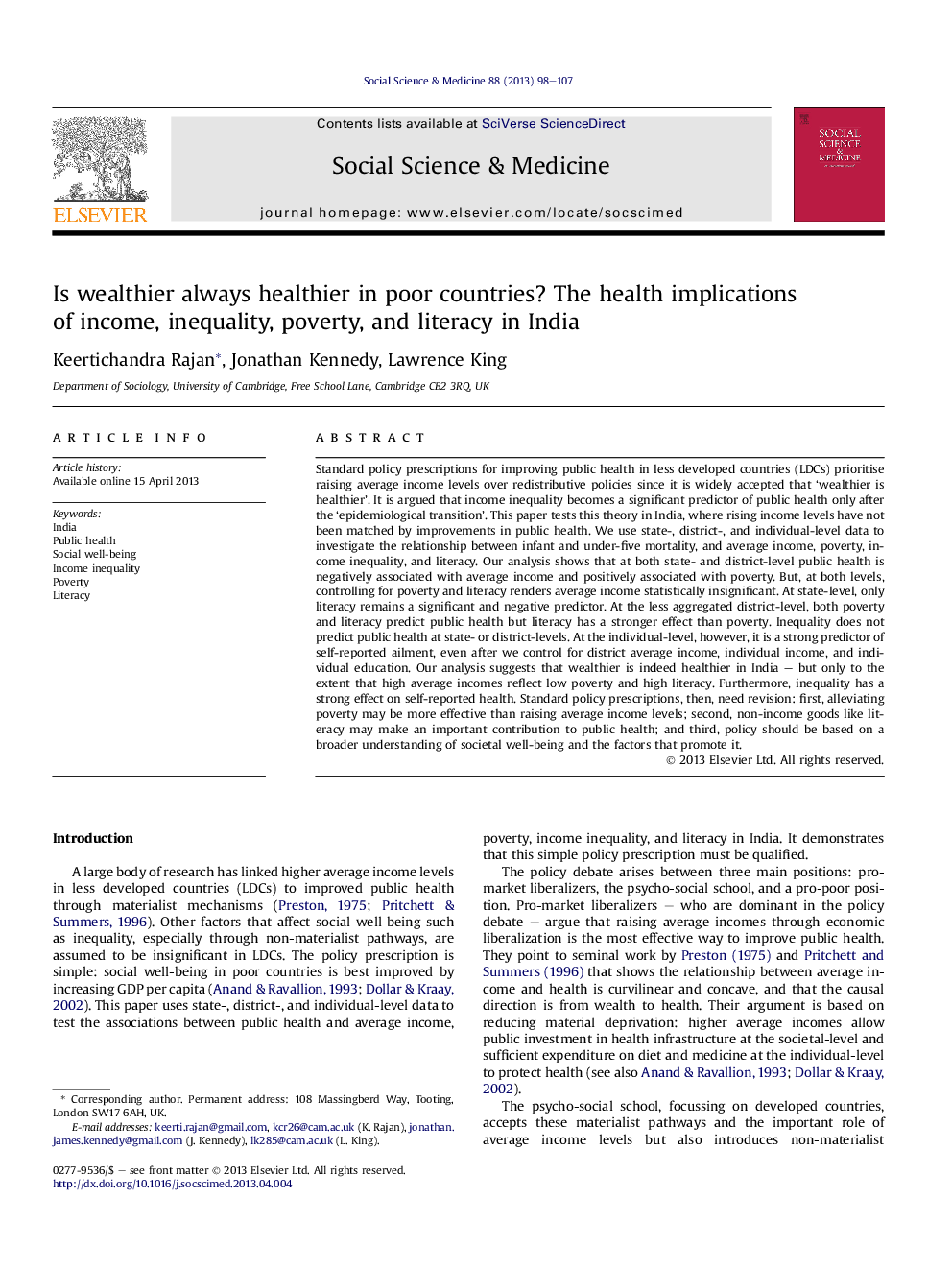ترجمه فارسی عنوان مقاله
آیا ثروتمندان همیشه در کشورهای فقیر سالم هستند؟ پیامدهای بهداشتی درآمد، نابرابری، فقر و سواد در هند
عنوان انگلیسی
Is wealthier always healthier in poor countries? The health implications of income, inequality, poverty, and literacy in India
| کد مقاله | سال انتشار | تعداد صفحات مقاله انگلیسی |
|---|---|---|
| 37739 | 2013 | 10 صفحه PDF |
منبع

Publisher : Elsevier - Science Direct (الزویر - ساینس دایرکت)
Journal : Social Science & Medicine, Volume 88, July 2013, Pages 98–107
ترجمه کلمات کلیدی
هند - بهداشت عمومی - رفاه اجتماعی - نابرابری درآمد - فقر - سواد
کلمات کلیدی انگلیسی
India; Public health; Social well-being; Income inequality; Poverty; Literacy

